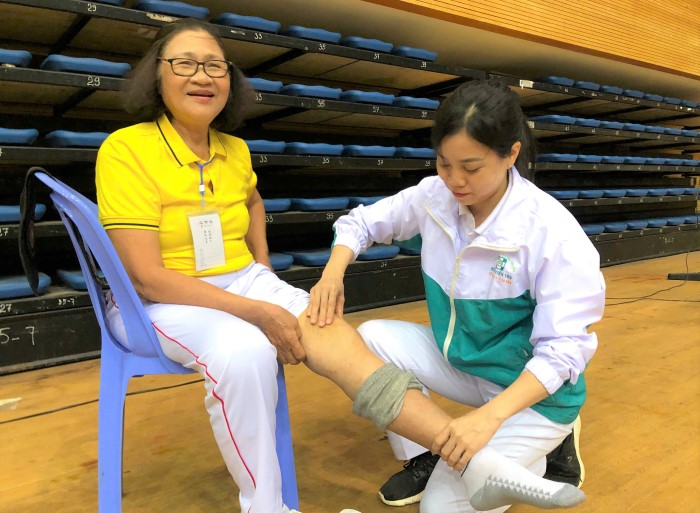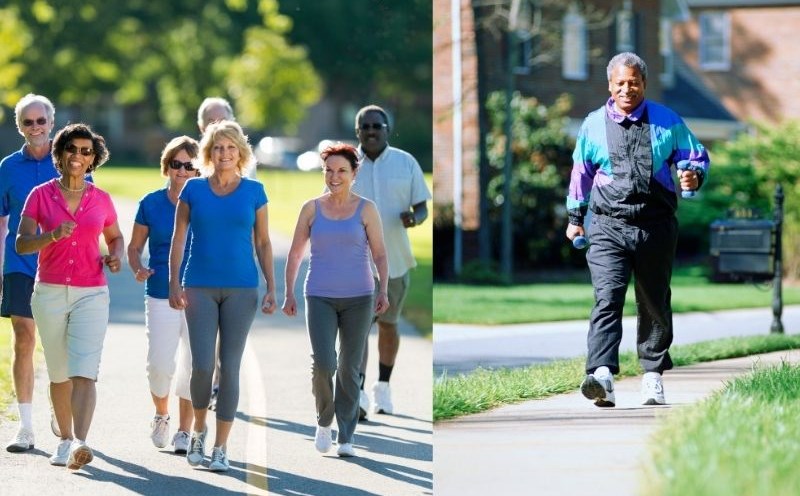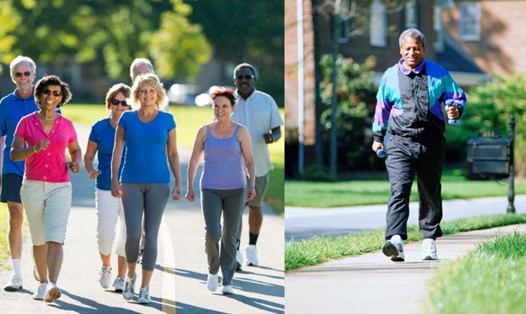In a cultural and sports event held outside the community for the elderly and middle-aged, many people showed signs of muscle and joint tension, leg pain, etc. Regarding this issue, Dr. Tran Ba Thoai - Member of the Executive Committee of the Vietnam Endocrinology - Diabetes Association, gave some notes to the community when walking for exercise in particular and similar physical activities in general.

Dr. - Doctor Tran Ba Thoai explains and shares 9 notes when walking, especially for the elderly from Dr. Aijaaz Ashai - an internationally award-winning physiotherapist from India, which are:
1. Don't push yourself
Start with short walks, especially for beginners, and gradually increase the distance and time. Walking slowly will help avoid straining your joints and muscles. Start by taking it easy.
2. Wear comfortable shoes
Shoes should have good arch support and cushioning to be comfortable while walking and to avoid injury. Shoes should fit well and be stable. If you don’t wear sneakers, loafers can be worn because they don’t have laces and are comfortable.
3. Use assistive devices
Older adults tend to lose their balance as they age. If you have balance problems, you may need to carry a cane. This will provide support and help prevent falls and injuries while walking.
4. Maintain posture and technique
Walking requires a simple technique. Place your heel on the ground first, then roll your toes down. At the same time, keep your head up, your shoulders back, and your arms swinging slightly to ensure a posture that puts less strain on your back and neck.
5. Drink enough water
Older adults should carry a bottle of water with them when walking. Experts say: Drinking enough water can maintain energy levels. In addition, dehydration can cause dizziness in older adults when walking.
6. Maintain speed
Walking too fast can lead to overexertion, experts say. If you feel short of breath or tired, stop for a moment. Also, keep your stride length natural. Longer strides put pressure on your legs.
7. Walk on flat roads
Walk on flat ground to avoid the risk of falling and injury. Ideally, parks or walkways are safest.
8. Dress comfortably
Choose comfortable clothing according to the weather. When walking outdoors, wear layers of clothing as this will help your body respond to changes in temperature. Also, for safety, wear light-colored clothing during the day. At night, older adults should wear reflective clothing and carry a flashlight.
9. Walk with friends
Walking with friends or in a group can be more fun. It can also provide more safety, in case of a health emergency.











